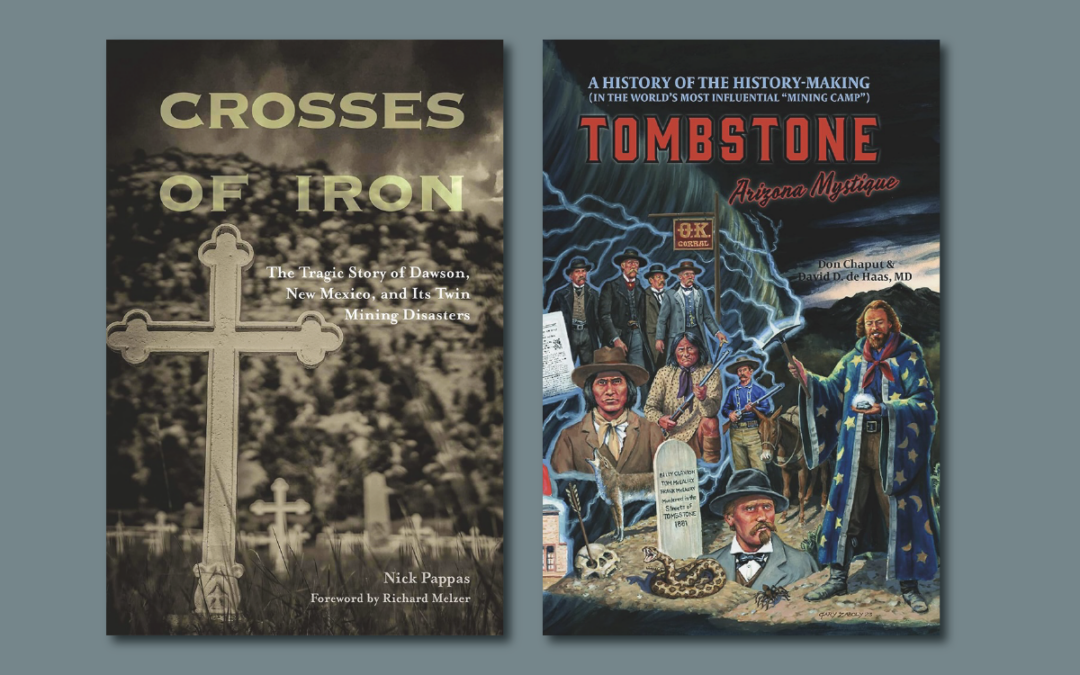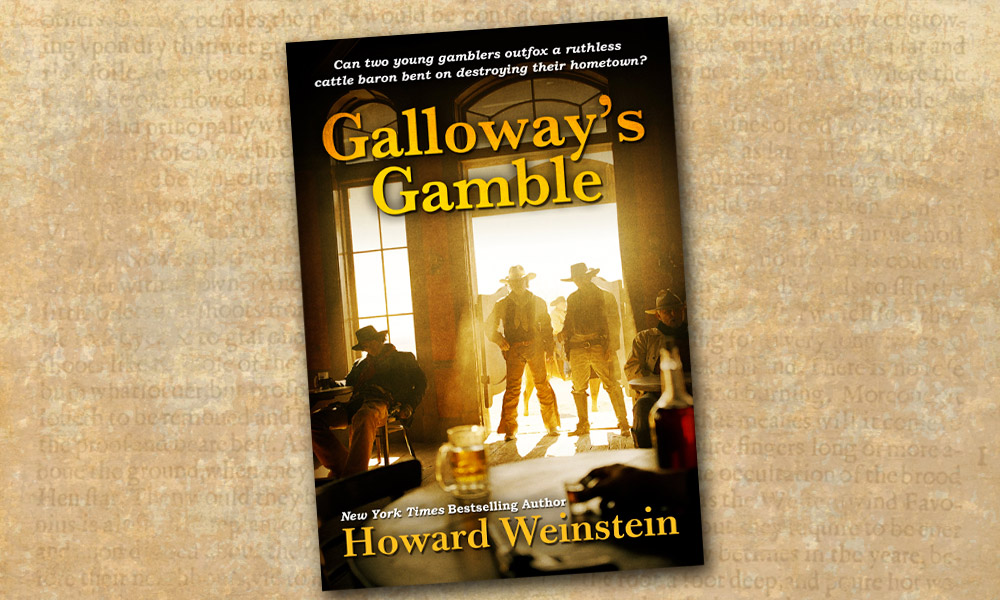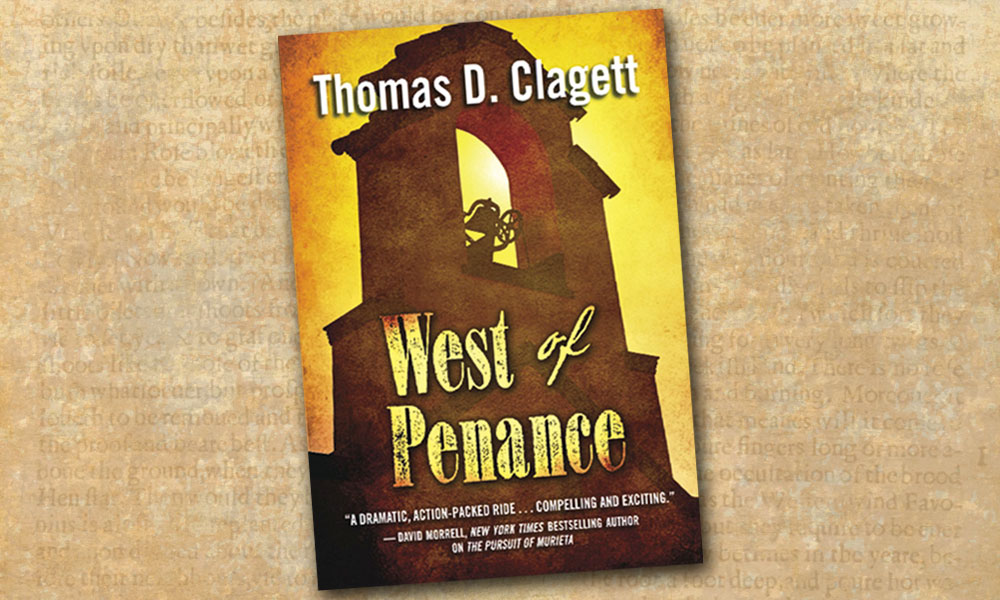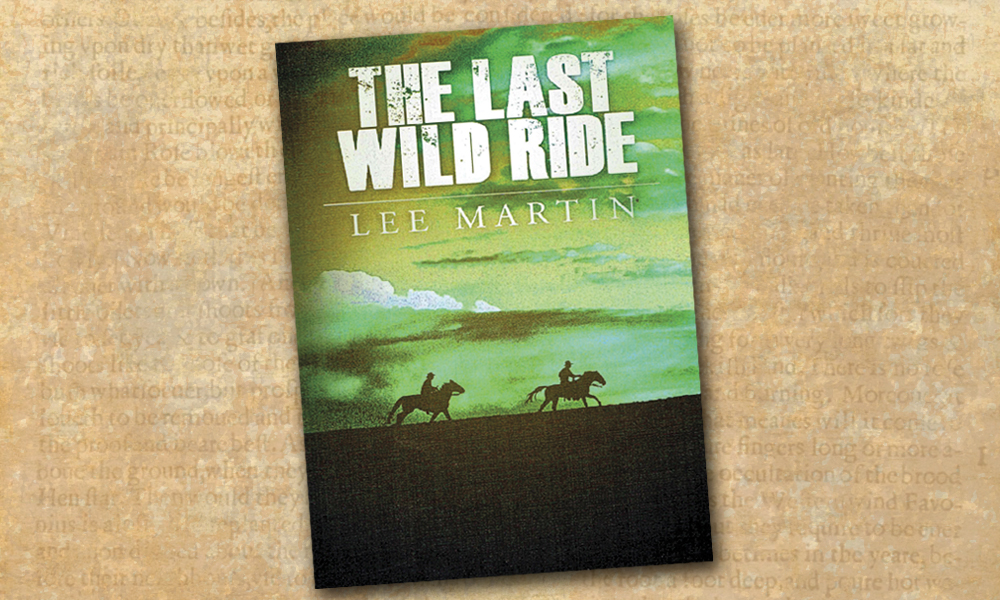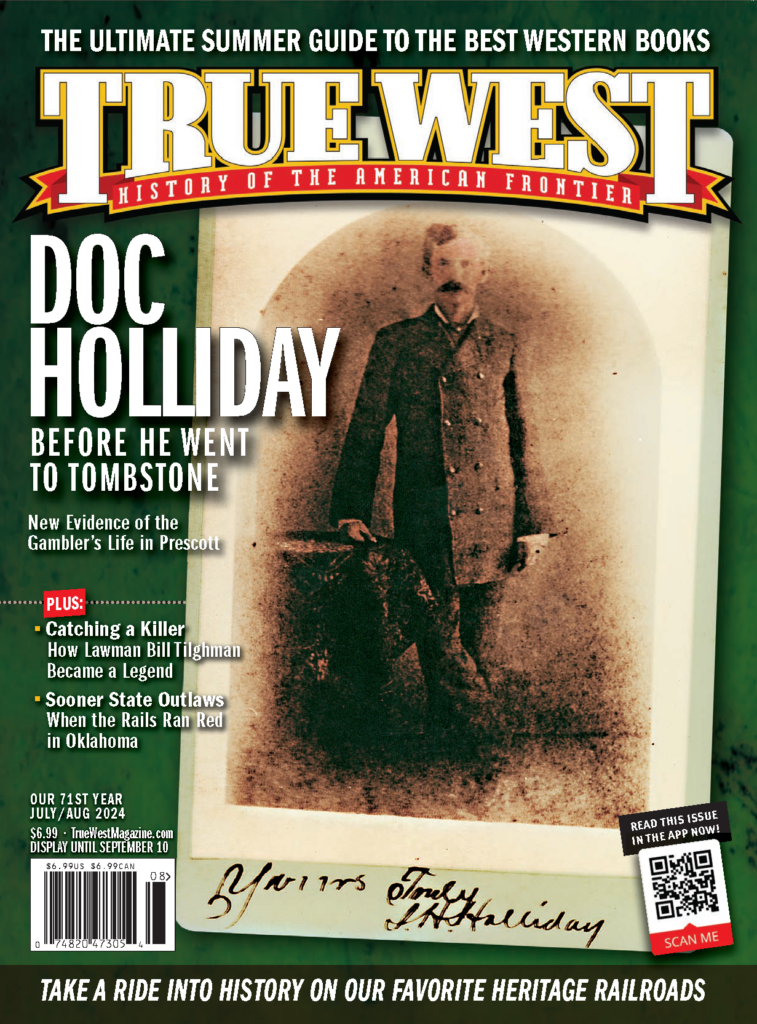Two new mining town histories, plus a Ford film trilogy history, a biography of Buffalo Bill, Lincoln’s spies and a conman for the ages.
The history of the American West is a story of infinite chapters, but one of the most studied subjects is mining towns. Recently published are two new studies of Southwestern mining communities, whose parallel histories are equally significant in Western American history, yet they are unequally remembered.
Don Chaput and David de Haas’s Tombstone, Arizona Mystique: A History of the History-Making (in the World’s Most Influential “Mining Camp”) (Caxton Press, $26.95) is an exemplary, encyclopedic-style history of what could be considered the most infamous mining town in American history. Chaput and de Haas are both well-respected Western researchers and historians who have individually written about the West—and Tombstone—for many years. Tombstone, Arizona Mystique is both a follow-up to their first book, The Earps Invade Southern California, and a culmination of their tireless and passionate research on Tombstone and its famous denizens.
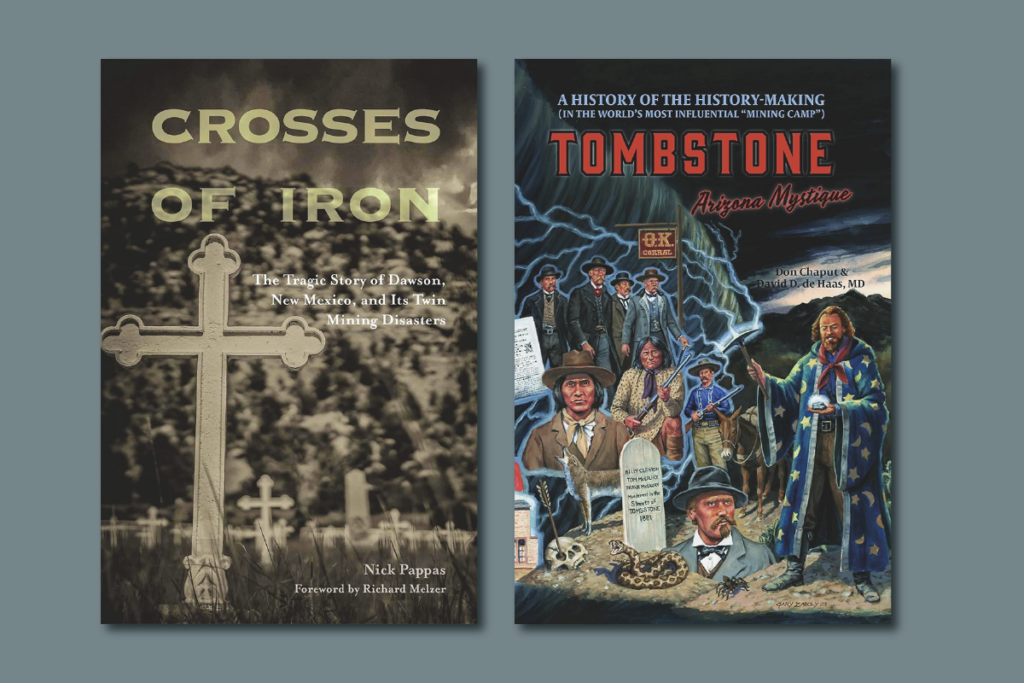
On the flip side of Western mining history from Tombstone, Arizona, is Dawson, New Mexico. The contrast between Dawson, a coal-mining company town, versus Tombstone, a frontier silver-boomtown, is striking, and historians have rarely done comparative studies of the two types of towns. After reading about both, scholars should consider deeper contrastive studies of the boom-and-bust mining camps and the company-owned mining towns. Both Dawson and Tombstone were founded when New Mexico and Arizona were still territories, but that is where most of the similarities end. Fortunately for students and scholars of the West, journalist Nick Pappas decided that the story of the nearly forgotten—and completely abandoned coal town—was worth researching and writing about. The award-winning writer’s Crosses of Iron: The Tragic Story of Dawson, New Mexico and Its Twin Mining Disasters (University of New Mexico Press, $21.95) is an instant classic and a cautionary tale of what the coal company’s pursuit of profit cost in human lives.
As a historian of the American West, I am going to have Chaput and de Haas’s Tombstone, Arizona Mystique close at hand as an important resource for researching and writing about the Cochise County mining camp. What will be useful to so many for years to come is their five chapters of biographies organized by era from 1877 to 2023. It is the encyclopedia of Tombstone and a testament to the determination of Chaput and Haas to research such a list of men and women who left their mark on the mining town’s history.
Pappas’s Crosses of Iron should be considered one of the finest investigations of Western mining history, and if read in tandem with Chaput and de Haas’s Tombstone Mystique, it will provide readers with a broader perspective on the twists of fate that determine whether a Western town lives or dies—or even survives in our collective memories. Fortunately for all of us, Pappas, Chaput and de Haas believed that their respective subjects were worth the time and toil to be retold and remembered.
—Stuart Rosebrook
Following Ford’s Guidon

Fort Apache, She Wore a Yellow Ribbon, and Rio Grande were three of the eight films John Ford helmed in just three years, among his finest work, and The Cavalry Trilogy: John Ford, John Wayne and the Making of Three Classic Westerns (TwoDot, $27.95) by Michael F. Blake provides an indispensable guide to them. These celebrations of America’s frontier army feature much of the best work of John Wayne and of the vast John Ford stock company. Michael Blake, first a busy child actor, then an in-demand makeup artist, has a unique perspective on daily life on
a movie set. He engagingly details the making of each film, from short story to screenplay to a day-to-day account of what was shot and what was kept. The pace maintained by a filmmaker who knew exactly what he wanted—each film came in under-time and under-budget—is a lesson today’s bloated-budget auteurs could learn from.
—Henry Parke, author of The Greatest Westerns Ever Made and the People Who Made Them
The Showman and the Latter-Day Saints

So much has been written about Buffalo Bill that one might expect there is little else to explore. Not so. Brent M. Rogers’s Buffalo Bill and the Mormons (University of Nebraska Press, $29.95) presents readers with new information about Cody, showing how he progressed from being anti-Mormon to considering them allies. Buffalo Bill’s change of heart began with an 1892 expedition to the Grand Canyon to explore the area as a possible nature preserve; along the way they were hosted by several Mormon families. After the expedition, Cody praised the hospitality and piety of the Mor-mons. This was the beginning of an evolving friendship that culminated in Buffalo Bill encouraging Mormon settlement in the Bighorn Basin of Wyoming. Rogers brings this story to the fore in a well-documented and entertaining form.
—Steve Friesen, author of The Galloping Gourmet: Eating and Drinking with Buffalo Bill

True West Archives
The Ghosts of the War

In The Unvanquished: The Untold Story of Lincoln’s Special Forces, the Manhunt for Mosby’s Rangers, and the Shadow War That Forged America’s Special Operations (Atlantic Monthly Press, $30), author Patrick K. O’Donnell sheds new light on the fascinating adventures of the scouts, rangers and spies of the American Civil War. The forerunners of today’s special forces, units like the Jessie Scouts, named in honor of the wife of Gen. John C. Fremont, “The Great Pathfinder” of the West, were composed of daring men who served in the shadows and gathered vital intelligence for the Union Army. O’Donnell, a masterful storyteller and military historian, introduces readers to a score of Union and Confederate warriors who carried out their missions on horseback, often in disguise. The author of 12 other books, O’Donnell brings to vivid life exciting tales of secret service missions and the epic hunt for John Singleton Mosby, the “Gray Ghost” of the Confederacy.
—Samuel K. Dolan, author of The Line Riders: The Border Patrol, Prohibition and the Liquor War on the Rio Grande

Heartland Conman

In Men of No Reputation: Robert Boatright, the Buckfoot Gang, and the Fleecing of Middle America (University of Arkansas Press, $34.95) historian Kimberly Harper, a noted voice on Southern violence and post-Reconstruction issues, brings (back) to life one of the greatest but little-known confidence men. As the head of the Midwest’s Buckfoot Gang, Boatright was every bit as dangerous and influential as Western conmen like Soapy Smith and Big Ed Burns. Through Harper’s meticulous research, Boatright’s story is again brought to national attention and exposes the seedy underbelly of Boatright’s criminal influence on the otherwise idyllic Midwest at the dawn of the 20th century. Men of No Reputation is a book of cunning ability about menacing criminals and offers deep insight into the world of men whose lives led them into the shadows as well as those who sought to catch them.
—Erik J. Wright is the assistant editor of The Tombstone Epitaph
Rough Drafts
We are just halfway through the publishing cycle of 2024, and it is proving to be a banner year for True West’s columnists.
Mark Boardman, who has been our features editor for over two decades, is the editor of The Tombstone Epitaph. Published monthly, TTE is one of the finest monthly publications publishing new research on the Old West.
Jana Bommersbach, with Bob Boze Bell, coauthored Hell-Raisers and Trailblazers: The Real History of Women in the West. The book is a hot seller and is in a second printing. (Jana is currently on sabbatical from her “Old West Saviors” column.)
“Renegade Roads” columnist and editor of Western Writers of America’s Round-Up magazine Johnny D. Boggs’s latest Kensington/Pinnacle Western, Bloody Newton: The Town From Hell, was just released in paperback and Kindle on June 24, 2024.
“Collecting the West” editor Steve Friesen’s latest book on William F. Cody, Galloping Gourmet: Eating and Drinking with Buffalo Bill (Bison Books) was published in December 2023 and is now available on Kindle.
“Frontier Fare” columnist Sherry Monahan’s latest Globe Pequot culinary history book, Signature Dishes of America: Recipes and Culinary Treasures from Historic Hotels and Restaurants, was released last fall and is also available on Kindle.
“Renegade Roads” columnist Candy Moulton’s latest book Sacajawea: Mystery, Myth and Legend earned the Wyoming author a Spur Award for Western Biography.
“Western Movies and TV” columnist Henry Parke’s first book, The Greatest Westerns Ever Made and the People Who Made Them, is based on his TW columns. It was published in paperback and Kindle earlier this year by TwoDot. Order a copy today at TWMag.com.
“Ask the Marshall” columnist Marshall Trimble and Executive Editor Bob Boze Bell just published their first book together,
The 66 Kids: Still Kickin’ It: More Stories and Hi-Jinks from The Mother Road. Order a copy today at TWMag.com.
—Stuart Rosebrook
Minnesota Author’s Favorite Books on Scandinavian Immigrants

Candace Simar likes to imagine how things might have been. She combines her love of history with her Scandinavian heritage to create historical novels that showcase real history with a good story. Simar writes about the Civil War, the U.S./Dakota War of 1862 and the Rocky Mountain locust plagues of the 1870s. Her newest release, Sister Lumberjack, is set in a logging camp during the 1890s harvest of Minnesota’s white pine forest. Follow her at candacesimar.com.
Let Them Eat Grass Trilogy (Smoke, Fire, Ashes) by Jack Koblas (North Star Press): Koblas provides a meticulous account of the causes, battles and aftermath of the U.S./Dakota War of 1862. It drew little attention, but was the largest Indian War in U.S. history with more than 600 Minnesotans killed.
Giants in the Earth by O.E.Rolvaag (Minnesota Lincoln Concord 1925): Rolvaag drew deeply from his immigrant experience to create a novel about Scandinavian settlers that is both beautiful and tragic.
Harvest of Grief, Grasshopper Plagues and Public Assistance in Minnesota by Annette Atkins (Minnesota Historical Society Press): Atkins presents a well-researched account of the Rocky Mountain locust infestations of the 1870s that plagued North American prairies from Canada to Texas.
Timberrr! Pine Logging in the Big Fork River Country by Benhart Rajala (North Star Press): Rajala writes from his experiences as a lumberjack in Northern Minnesota. Thirty-thousand lumberjacks butchered wood during the glory days of white pine. Their efforts changed the Minnesota landscape forever.
The Emigrants by Wilhelm Moberg (Borealis Books): This four-book series shatters the romantic myth of the immigrant life. Moberg’s gritty and realistic portrayal is eye-opening. A must read for those trying to understand how it really was.

